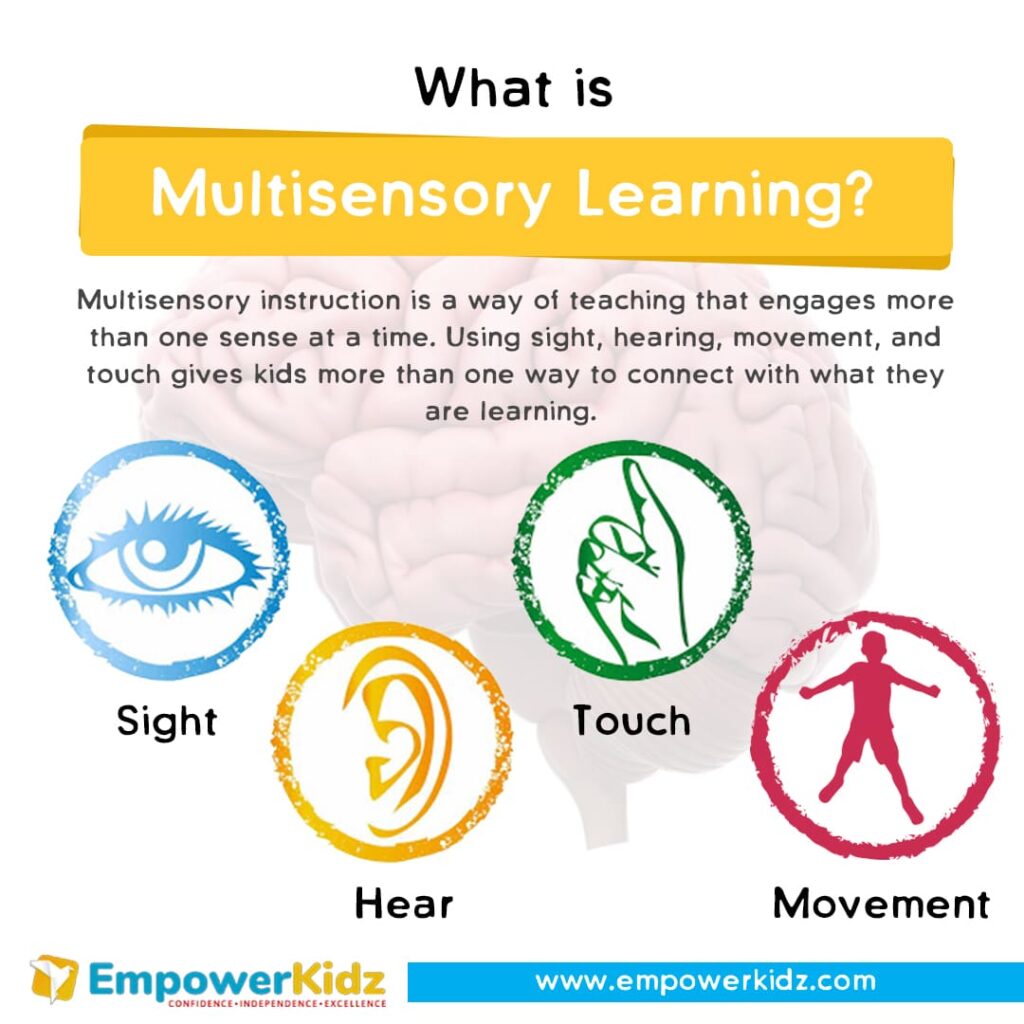What is Multisensory Learning?
June 22,2020 by Anupma
June 22,2020 by Anupma

All learning occurs through the senses, which serve as pathways to the brain. These are the basic pathways to a child’s brain:
A multisensory approach engages students on all these levels at one time. Multisensory lessons have a great effect because no matter the learning capacity of each child (be it auditory, visual, tactile, or kinesthetic), a multisensory lesson will target the learning strengths of all students at one time.
Multi-sensory instruction is not only for reading (visual) and listening Auditory but uses all the sensory channels, (touch, and Movement) to reinforce the skills and concepts being taught.
Auditory Approach:
Children who are auditory learners need lessons to be presented via this approach. They don’t just need to hear a lesson taught; they mostly need to hear themselves speak what they are learning.
Auditory learners benefit from:
Visual Approach:
Children who are visual learners don’t just need to see what they are learning, they need visuals that show the meaning of what they are learning.They benefit from:
The visual approach most frequently is accompanied by the tactile or kinesthetic approach.
Tactile Approach:
Children who learn tactilely must have the opportunity to use their hands to learn. This goes beyond paper and pencil learning. Tactile learners make meaning by moving things around, by manipulating objects that represent the concepts they are learning.They benefit from:
Kinesthetic Approach:
Kinesthetic learners must move in order to focus and learn. They also benefit from moving in ways that mimic the concept they are learning. Kinesthetic learners are most often visual learners as well. They can present a challenge in the classroom due to their need to move, but when they understand their giftedness, they become their own best ally.
They benefit from:
All kids can benefit from multisensory lessons. If kids learn something using more than one sense, the information is more likely to stay with them. The engaging activities result in better memory of the skill.
But multisensory learning can be particularly helpful for kids who learn and think differently. For example, students who struggle with visual or auditory processing may find learning information through only reading or listening a challenge.
Using multiple senses gives all kids more ways to connect with what they’re learning. This type of hands-on learning can make it easier for kids to:
Multisensory instruction helps kids tap into the ways they feel most comfortable learning to make connections and form memories. And it allows them to use a wider range of ways to show what they’ve learned.
Multisensory teaching takes into account that different kids learn in different ways. It helps meet the varying needs of all kids—not just those who learn and think differently. And by providing multiple ways to learn, it gives all kids a chance to thrive.
2411, Old Crow Canyon Road, Suites 105 & 120, San Ramon, CA 94583, USA
anupma@empowerkidz.com
+1 (669) 900-2315
© Copyright 2021 EmpowerKidz
Designed & Developed by Congruence Digital
Leave a Reply